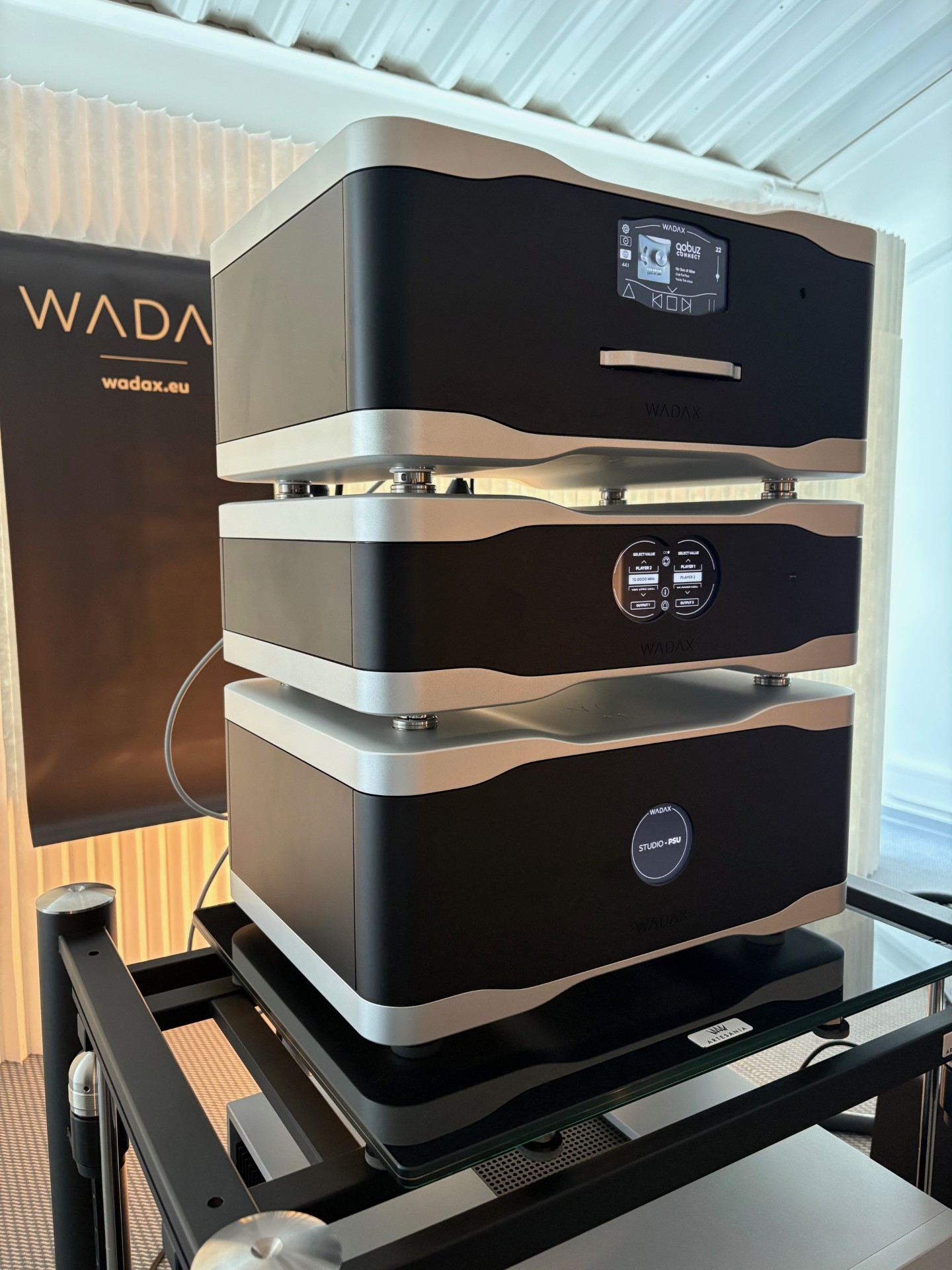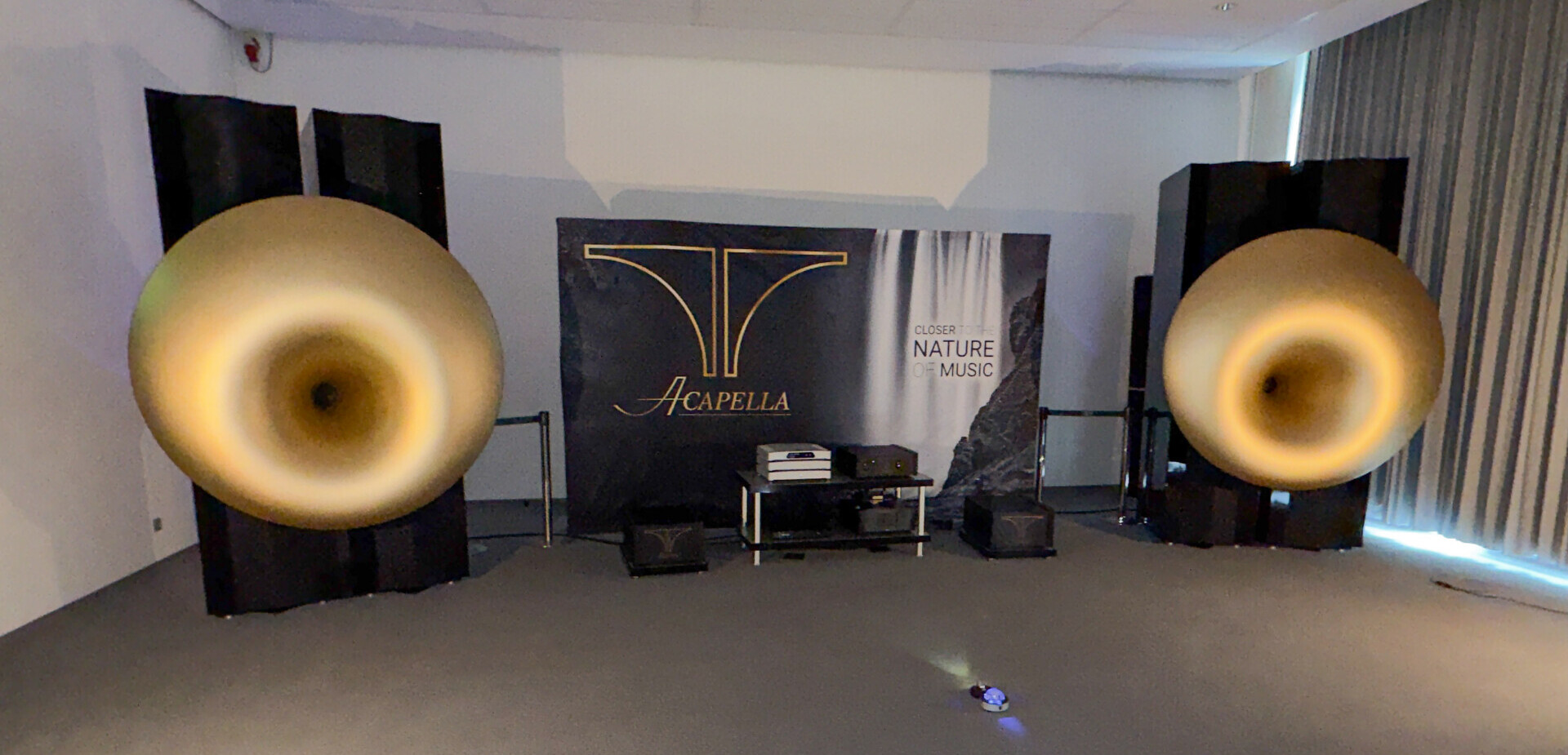One trend that seems set to go the distance is the rise and rise of the Wadax Studio Player/Line. Featuring at the front-end of no fewer than nine systems at the show, it was no coincidence that many of those systems were also amongst the best sounding – almost exclusively so if you only consider digital playback. With more and more people hearing the Player, it’s becoming increasingly understood that, when it comes to digital replay, the Wadax is both fundamentally different to and fundamentally more musical than the competition. By integrating its information and detail into a more spatially and temporally coherent picture, it gives nothing away to the ‘definition uber alles’ brigade, while its focussed energy and harmonic density easily trumps the veiling, padding and smearing of the various tube DACs. When it comes to rhythmic integrity and dynamic expression, it’s pretty much in a league of its own.

This is the new reality – and it’s only going to get worse for the likes of dCS. The arrival of the first additions to the Studio Line, the external power supply and a universal clock, further extend performance and options. Not surprisingly, the impact of those upgrades is one of the big stories from the show. You can read our first impressions here https://gy8.eu/blog/munich-high-end-2025-products/4/ but suffice to say, the listening experience didn’t disappoint while the stack as a whole is definitely handsome. Wadax is already laying waste to the serious, one-box digital replay market. Now they’re stepping up in weight to take on the mainstream, multi-box offerings (products that have already been undermined by the arrival of the standalone Studio Player). Spanish football might not be doing so well right now, but audio from the Iberian peninsular is definitely on a high…

For some years now, Magico has been turning in consistently excellent show performances. They’ve coincided with three changes in the show set-ups: the use of smaller, more manageable speakers; the use of the Wadax Reference DAC/Server and the use of the Telos power and grounding products. Now, other companies are following suit. We’ve already talked about the spreading presence of the Wadax Studio Player, but the Telos power and grounding solutions were not far behind, featuring in not just the Magico room, but YG Acoustics, Rockport/Absolare, Peak Consult and Hi-Fi Stay all deployed the Taiwanese power solutions to considerable musical benefit. With the brand announcing equally as advanced, almost as capable, yet considerably more affordable options at the show, expect to see far more exhibitors (at least those to whom sound quality actually matters) using the Telos Foundation and Monster Series products to support their show systems in future.

One less positive trend was the failure of any of the many horn speakers on show to really step up in terms of performance. Several managed to be inoffensive (amongst them Aries Cerat, which marks a huge improvement over the aural and physical assault they mounted in 2024), but most were horribly disjointed, exaggerated and incoherent, while horn colourations seemed to have returned with a vengeance. Horn systems seem to divide audiophiles and their opinions with an almost religious vigour, the supporters accepting no substitute, the detractors load in their criticism. As usual, reality is rather more nuanced than that. A great sounding horn system is a thing of majestic beauty and exhilarating experience – but horns are harder to get right than almost any other speaker. A skid in a car at 20kph is just a little slip. At 200kph it’s a whole different thing. Likewise, work with a 90dB box speaker and the inherent losses and dynamic constriction draw a veil over a multitude of sins. Start playing with speakers well the wrong side of 100dB in terms of sensitivity and every flaw, blemish and discontinuity sticks out like it’s been fired at you – and dynamic range alone doesn’t compensate nearly enough. Many of the best systems I’ve enjoyed have used horn speakers. None of those systems were here. Even brands like Cessaro, who turned in an excellent showing last year, were well below that standard this year. The large, modular system, complete with a quartet of box-based subs manged to produce bass that was lumpy and totally detached, a piano keyboard that spread across the whole (considerable) width of the system and a piano itself, utterly devoid of upper range harmonics. The company was alternating presentations with a smller, two-way hybrid design, which sounded far more convincing, better integrated and made much more musical sense. They should have taken one listen and stuck with it! But the Cessaro experience was far from isolated, with massively exaggerated soundstages, searing upper registers and detached bottom ends being the order of the day. The AvantGarde room escapes such criticism only because it was impossible to get a decent listen, so dense were the crowds. Therein lies the connundrum: big horns are a big draw – but on this showing they need to do more, much more, to live up to their billing. We normally anticipate at least one great horn-based system in Munich. This year we were sorely disappointed.

